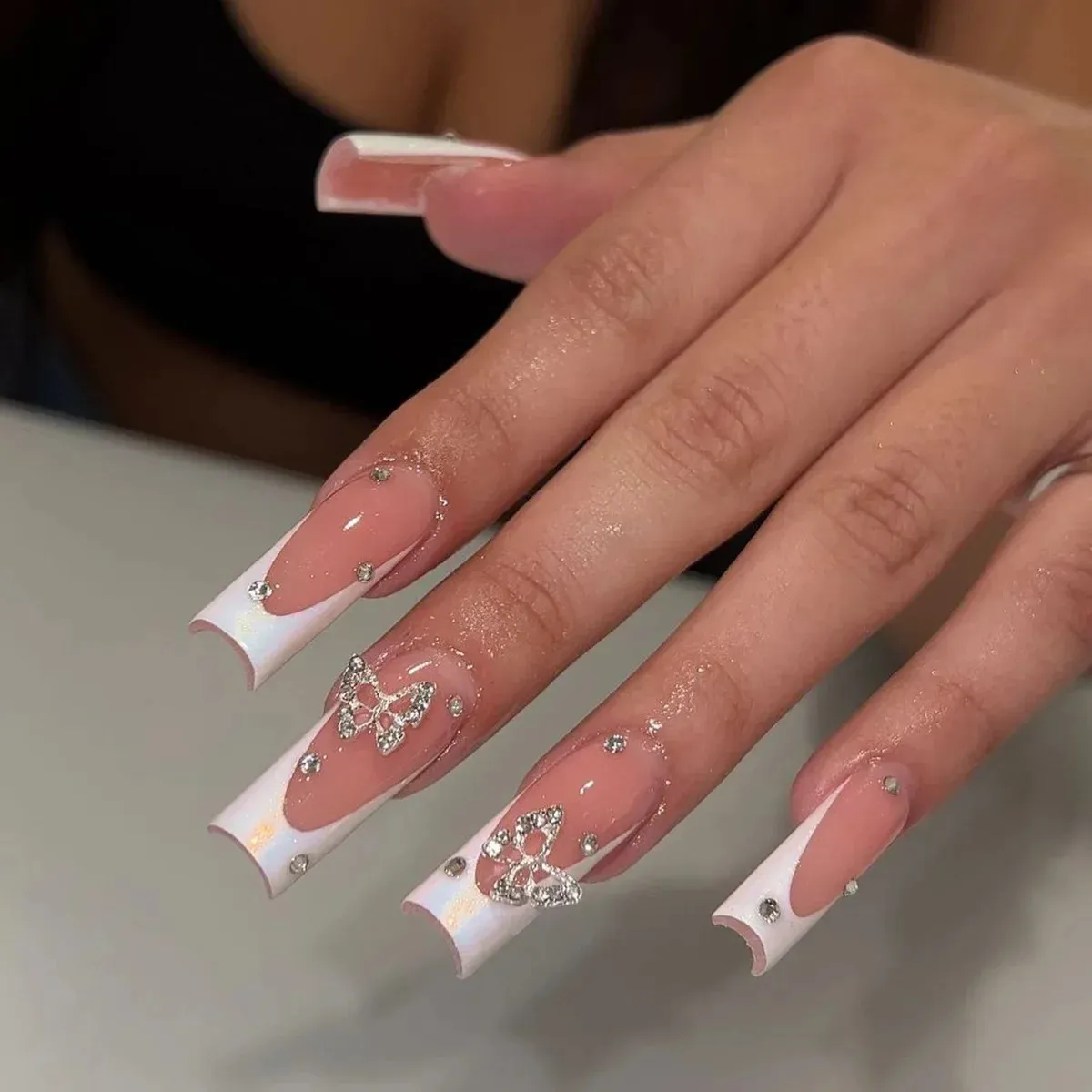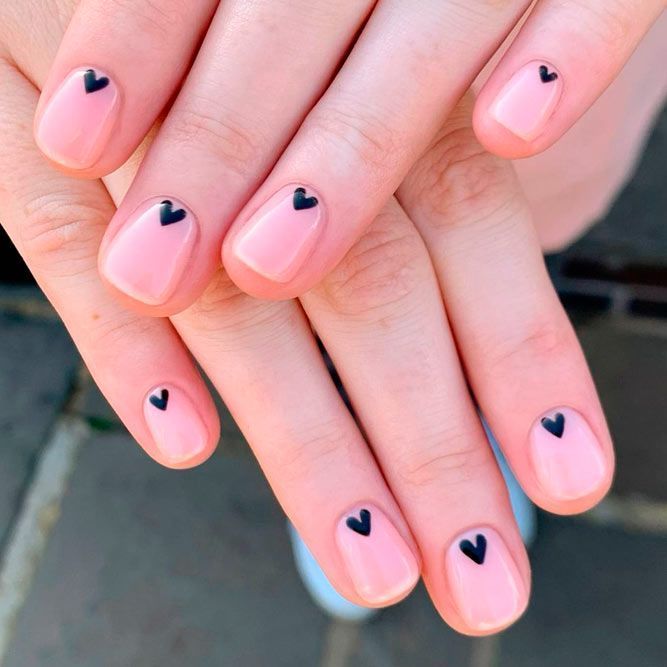
Acrylic vs. Gel Nails: A Guide for Perfect Nails
Introduction to Acrylic and Gel Nails
When seeking long-lasting nail enhancement, one typically encounters two popular options: acrylic and gel nails. This section aims to clarify these choices by providing key information and insights into each type.
Acrylic Nail: These are nail enhancements made by combining a liquid monomer and a powder polymer. This mixture is applied to the natural nails, hardens, and provides a strong, thick coating. They are durable and can be shaped and painted in various ways, making them a versatile option.
Gel Nails: Gel nails involve applying a gel-based polish, which is then cured under a UV lamp to harden. Gel nails tend to look more like natural nails, offering a glossy finish that’s both attractive and less rigid.
Both types have their distinct application processes, maintenance needs, and removal methods, which will be discussed in upcoming sections. Each has its advantages and challenges, which should be considered to make an informed decision based on personal lifestyle and nail health.

Differentiating Factors
Appearance and Look
When choosing what kind of nail you should get, the appearance and look are crucial factors. Acrylic nails typically have a thicker and more opaque finish, giving them a distinct, crafted appearance. In contrast, gel nails offer a shinier, more natural look resembling the gloss of natural nails.
Durability and Strength
Durability and strength are essential for nail enhancement longevity. Acrylic nails are celebrated for their hardiness, reducing the risk of chipping and breaking, which is ideal for an active lifestyle. However, gel nails, while also durable, provide more flexibility but may not match the robustness of acrylics.
To summarize, your choice should rely on your preference for look and need for durability. If you prefer a natural sheen and lighter feel, gel nails might be your pick. If you value resilience and want a more sculpted look, consider acrylic nails. Keep in mind the strength of your natural nails and your daily activities to guide your decision.
Application Process
How Acrylic Nails are Applied
Acrylic nail start with a clean and prepped nail bed. A mix of liquid monomer and powder polymer is created, applied to nails, and shaped. After air-drying, the nails are filed to the preferred shape and length.
How Gel Nails are Applied
For gel nails, the process begins similarly with nail preparation. A gel-based polish is then applied and cured under UV light. This creates a durable, glossy finish that resembles natural nails.

Maintenance and Removal Techniques
Maintaining and removing acrylic and gel nail require different approaches. Below, we’ll explore the best practices for both types.
Caring for Acrylic Nails
For acrylic nail, regular fill-ins are crucial. You should schedule them every two to three weeks. During these sessions, the technician fills in the gap between the nail bed and the acrylic nail, preventing lifting and breakage. It’s vital to keep acrylic nails dry and clean to avoid bacterial growth. Furthermore, avoid using harsh chemicals without gloves as they can damage the acrylic.
Caring for Gel Nails
Gel nails also need regular maintenance. Like acrylics, fill-ins are necessary every two or three weeks. Gel nails should be kept away from harsh chemicals. Since they are less prone to yellowing, simple, regular cleaning is sufficient. Using cuticle oil can help maintain the flexibility and health of gel nails.
Removal Processes for Both
Removing acrylic nail involves soaking them in acetone for about 20 minutes and then gently filing down the material. This method can be harsh on natural nails if done frequently. On the other hand, gel nails are simpler to remove. They require soaking in acetone, wrapped in foil, for about 15 minutes. After soaking, the gel can be carefully buffed away.
It’s important to note that professional removal is recommended for both types to avoid damaging the natural nails. Always follow a removal session with a nourishing treatment for your natural nails to restore their health.

Cost Comparison
When pondering which nail enhancement to choose, the cost is a pivotal consideration. This section will outline the financial aspects of acrylic and gel nails, both in initial application and ongoing maintenance.
Initial Costs and Maintenance
Acrylic nail typically present a more budget-friendly option. Initial application ranges in price, generally costing less than gel nails. However, upkeep is essential. Regular fill-ins, every two to three weeks, are necessary to maintain the impeccable appearance of acrylics, and this routine cost should be factored into the overall expense.
Gel nail, with their natural and glossy finish, tend to command a higher price for the initial set. Despite the higher starting cost, gel nail also require routine maintenance every two to three weeks. The materials used in gel nails, as well as the required UV lamp for curing, contribute to the increased price point.
Long-term Expenses
Beyond the immediate outlay, long-term costs for both nail types can accumulate. Acrylic nail, while cheaper at first, may ultimately incur more expense due to potential nail damage and the need for professional removal. Gel nail, although pricier upfront, might prove to be a more cost-effective option over time if managed correctly, thanks to easier removal processes that are less damaging to natural nails.
In summary, acrylic nail are a cost-effective choice for those on a tighter budget, but long-term maintenance and potential nail care to counteract damage must be considered. Gel nails, with their higher initial price, offer a potentially more economical choice in the extended run due to the gentler impact on natural nails and simpler removal. Your decision should be influenced by both your short-term budget and long-term nail health considerations.
Pros and Cons
When navigating the world of nail enhancements, understanding the pros and cons of acrylic and gel nail is vital. This knowledge ensures that you select the most suitable type for your needs and lifestyle. Let’s dive into the advantages and disadvantages of each option.
Advantages of Acrylic Nail
Acrylic nail boast several benefits:
- They’re Long-lasting: Acrylics can endure for up to six weeks with proper care.
- Strong and Durable: They resist chipping, which makes them great for active individuals.
- Affordable: Acrylics are generally less costly than gel nail.
- Low Maintenance: They don’t need frequent touch-ups or polish.
- Versatile Looks: You have many styles and colors to choose from.
However, acrylic nail also come with some drawbacks:
- Potential Nail Damage: Incorrect application or removal can weaken natural nail.
- Noticeable Appearance: They may look less natural than gel nail.
Advantages of Gel Nail
Gel nail also come with a set of perks:
- Natural Finish: They provide a glossy, natural look.
- Gentler Removal: Gel nails are easier and less damaging to remove.
- Variety of Colors: Wide range of color options available.
- Flexibility: They have more give, which may feel more natural.
Yet, gel nails are not without their cons:
- Cost: Gel nail usually cost more than acrylic ones.
- UV Lamp Required: A UV lamp is necessary for curing.
- Less Durable: While long-lasting, they are not as strong as acrylics.
Choosing whether to get acrylic or gel nails depends on evaluating these pros and cons. By considering such factors as budget, durability needs, and aesthetic preferences, you can make an informed decision regarding your nail care.

Making the Right Choice
Choosing the right type of nail enhancement—acrylic or gel—depends on several personal factors. Here’s what to weigh in when making your decision.
Factors to Consider
When deciding what kind of nail you should get, think about your daily routine and the look you desire. Factor in your natural nail strength and your budget too.
- Daily Activities: Do your hands go through a lot each day? Acrylic might be better.
- Desired Look: Want something that mimics the natural nail look? Opt for gel.
- Natural Nail Strength: If your natural nail are weak, gel is less damaging.
- Budget: Acrylics are more budget-friendly, but consider long-term health costs.
Lifestyle and Nail Health
Your lifestyle and the health of your natural nail are key to your decision.
- Busy Lifestyle: Acrylics are great for those who are hard on their nail.
- Nail Health: Gel nail offer a kinder option for nail health during removal.
In summary, the perfect choice in nail is unique to each person. Weigh these factors carefully to ensure your nail choice fits your daily life, nail health, and financial plan.
Conclusion
When choosing the right type of nail for your project, whether it’s for home improvement, crafting, or professional construction work, there are several key factors to consider to ensure you select the best option. First and foremost, assess the material you’ll be working with. Different substrates—such as wood, drywall, or metal—require specific types of nails that are designed to provide the best hold and stability. For instance, galvanized nails are ideal for outdoor projects due to their resistance to rust, while finish nails provide a seamless look for trim work.
Next, consider the size and length of the nail. The thickness and length will greatly influence the strength of the fastenings and their overall effectiveness in securing objects together. A project involving heavier materials will benefit from thicker, longer nail, whereas lighter tasks may only require shorter, thinner options. Nail heads also come in various styles, such as round or flat, and this can impact not just functionality but also aesthetics.

